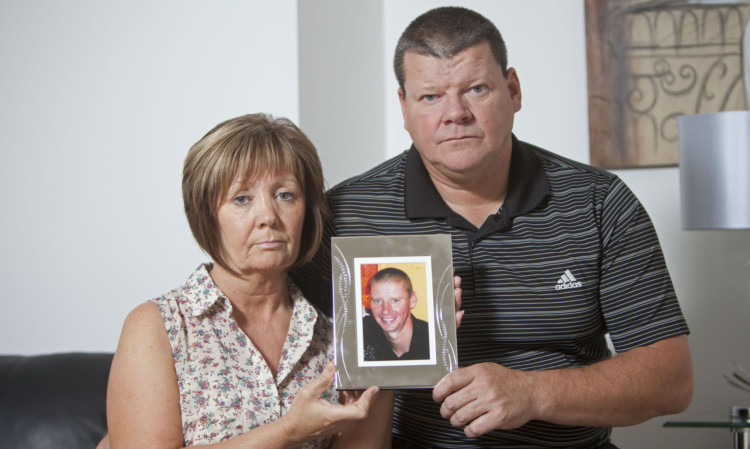
A grieving father whose only son died of mad cow disease fears a Government inquiry will not expose the truth about its dangers.
Speaking after studies revealed one in every 2,000 Britons could be carrying the infection without knowing, Tommy Goodwin warned: “I think this is going to be a massive cover-up.”
The taxi driver nursed his 30-year-old son Grant in his agonising final days as he succumbed to the human form of BSE, known as variant Creutzfeldt-Jakob disease (vCJD). Grant, from Hamilton, became the world’s first victim of vCJD when he died in 2008.
Now a Commons committee has ordered an independent inquiry into the safety of blood donations following fears some may be infected with vCJD.
But last night, Tommy, 53, told The Sunday Post: “The truth needs to come out about blood safety and the whole scandal of vCJD. But I think this inquiry is going to be another Government whitewash.”
Grant doesn’t even appear among the official number of 176 vCJD victims because experts insisted the disease did not affect his particular gene type.
Mr Goodwin said that for the Government to admit vCJD could jump gene types would mean accepting a new strain existed with a much longer incubation period spanning decades.
Experts now believe people of all gene types carry the “prions” which cause the disease and can pass them on through donations and transplants.
Tommy and his wife Margaret are backing calls by campaigner Christine Lord whose own son died from vCJD for evidence from bereaved families to be part of the inquiry, announced last week by the Commons Science and Technology Committee.
It comes 13 years after the Phillips report, which ruled Tory ministers failed to warn of BSE’s dangers.
Committee chairman Andrew Miller said: “Your heart goes out to people who have suffered hell on earth.
“We’re trying to create the space for public discussion.”

Enjoy the convenience of having The Sunday Post delivered as a digital ePaper straight to your smartphone, tablet or computer.
Subscribe for only £5.49 a month and enjoy all the benefits of the printed paper as a digital replica.
Subscribe